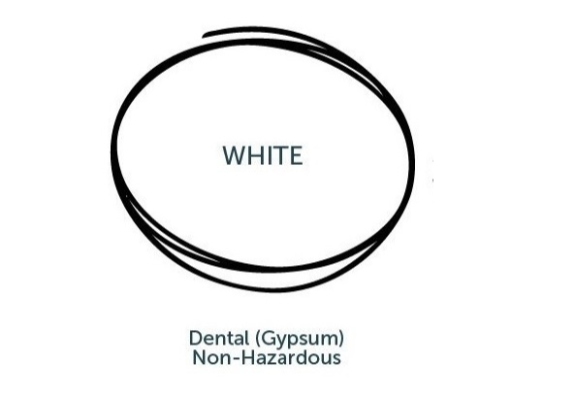
01
Aug
2016
Next in Initial Medical’s ‘Follow the Colour Code’ clinical waste blog series, it’s important to be whiter than white…
An inherently positive colour, white is associated with purity, innocence, light, goodness, wholeness and faith. In some settings it is also a sign of cleanliness, protection and safety. The colour white aids mental clarity, evokes thoughts of purification and fresh beginnings and encourages simplicity and the removal of clutter.
With regards to light, white contains an equal balance of all colours in the spectrum, which separate and become visible only when the light is shone through a prism. White clothing is often worn by healthcare professionals to highlight cleanliness and efficiency, and being totally reflective, it is often the colour of choice in hot climates. A white flag is also the universal symbol for surrender and a truce, while a white dove is widely recognised as a sign of peace.
In Western culture, a bride will traditionally wear a white dress on her wedding day to symbolise purity and bring luck to the marriage. It is also considered by some sources as the safest car colour as it is easy to see against the black road.
In places like Peru and Japan, the colour white is associated with angels, good health and time. In many Asian cultures including China and India, it is linked to death and mourning.


With regards to clinical waste segregation and disposal, white is also the colour designated to dental-specific waste such as amalgam and dental study models. While you are unlikely to generate this waste stream in your cosmetic clinic, it certainly doesn’t hurt to know what dental waste consists of.
White’ waste can in fact be separated into two further waste streams – amalgam and gypsum.
The former is the metal material used to fill teeth, although it is decreasing in popularity due to its poor aesthetics.
As amalgam releases low levels of mercury vapour, which has been associated with adverse effects in the brain and kidneys, it is important to segregate and dispose of all waste amalgam carefully, ensuring it is in a sealed container so as to protect staff and patients alike. Regarding gypsum waste, dental study models are made from gypsum – this was banned from normal landfill in 2009 as it can produce sulphide gas when mixed with biodegradable waste. It is therefore distinguished as high sulphate waste and must be disposed of separately.

For all professionals coming into contact with and handling clinical waste, it is essential to understand the regulations and be comfortable with the colour coding system, as recommended by the Department of Health.
To ensure competency and encourage effective waste segregation and disposal, it’s important to train all new staff members and provide them with the appropriate information and guidance. According to the Management of Health and Safety at Work Regulations, staff should also be made aware of the risks to their health in association with the substances they might be handling, and provided with information on any recommended precautionary measures.
The use of visible posters can be beneficial as well, if carefully located in appropriate areas around the premises to remind staff of the correct procedures. Posters or flyers regarding the colour coding system may also be displayed as a clear reminder of which colour should be assigned to which type of waste.
Following the initial induction of employees, ongoing training should be implemented to refresh and reinforce their understanding of the colour coding system, covering any updated or new regulations.
Particularly when a business is disposing of highly infectious or toxic waste (yellow or purple), refreshment and enforcement of the regulations is paramount to the safety of all staff and indeed patients.
A policy for the safe management and disposal of clinical waste cannot be truly effective unless it is applied thoroughly, consistently and universally – this requires thorough training and ongoing opportunities for staff to refresh and update their knowledge.